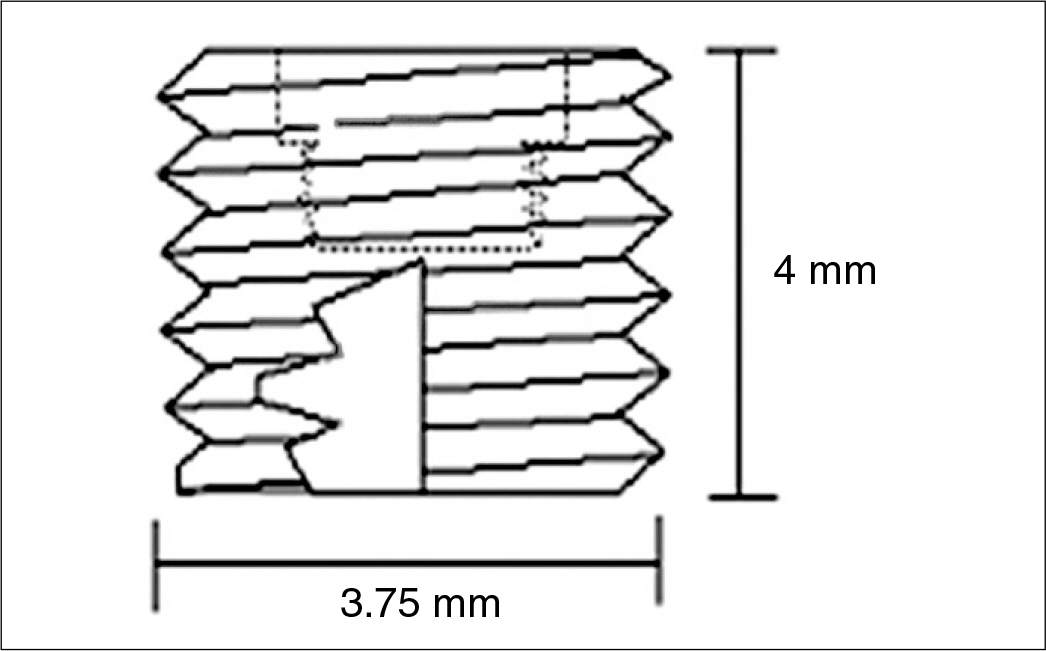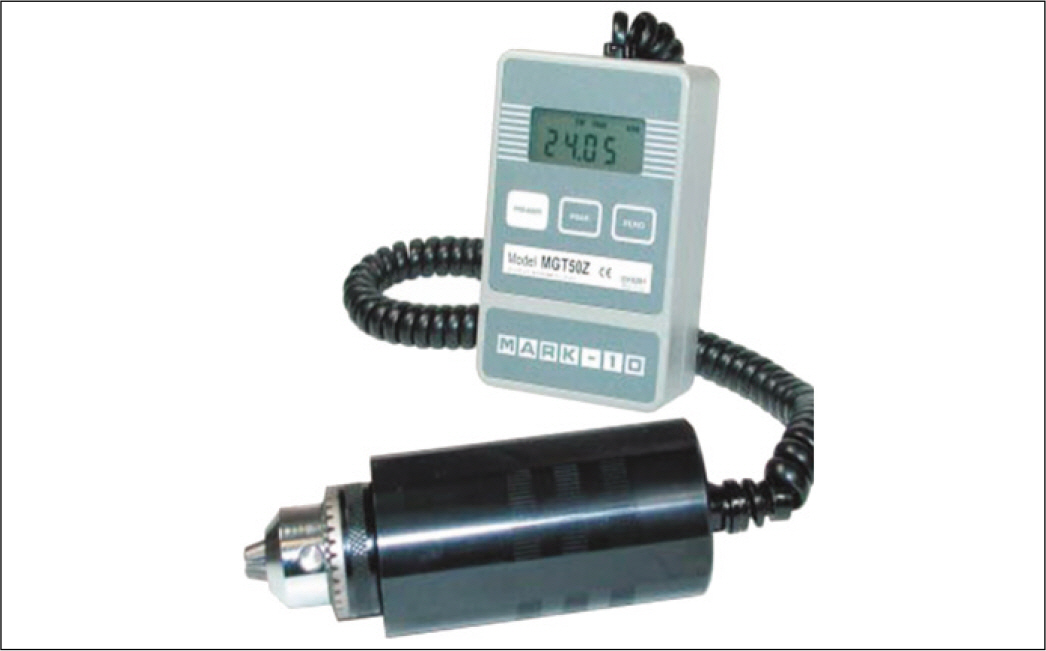J Korean Acad Prosthodont.
2010 Jul;48(3):209-214. 10.4047/jkap.2010.48.3.209.
Study of the re-osseointegration of implant fixture after mechanical unscrewing
- Affiliations
-
- 1Department of Prosthodontics, School of Dentistry, Kyungpook National University, Daegu, Korea. chlee@knu.ac.kr
- KMID: 2195557
- DOI: http://doi.org/10.4047/jkap.2010.48.3.209
Abstract
- PURPOSE
The purpose of this study was to investigate whether the re-osseointegration of the implants that had mechanical unscrewing possibly occurred or not. Furthermore, if it happened, the degree of re-osseointegration was evaluated by comparing with previous osseointegration.
MATERIALS AND METHODS
The smooth implant (commercial pure titanium 99%) specimens, whose diameter and length was 3.75 mm, 4 mm, respectively were produced. Two implants were inserted into each tibia of 7 New Zealand female white rabbits weighing at least 3.0 kg. The torque removal force for each implant after 6 weeks of implants placement was measured and included in group I . The torque removal forces were assessed after the fixtures were re-screwed to original position and the subjects were allowed to have 4 more weeks for healing and included in group II. One rabbit was sacrificed after first measurement and produced 4 slide specimens in group I, and two rabbits were sacrificed after 2nd measurement, 7 slide specimens, in group II for histomorphologic investigations. All slide specimens were assessed based on the proportion of BIC (bone-implant contact) as well as CBa (Bone area in the cortical passage) value produced by counting the screw threads embedded in the compact bones under the optical microscopic analysis (x20). Statistical analysis was conducted to evaluate the torque removal force, BIC and CBa between group I and II.
RESULTS
As for the torque removal force, the result was 10.8 +/- 3.6 Ncm for group I and 20.2 +/- 9.7 Ncm for group II. Furthermore, the torque removal force of group II increased by 98.1% in average compared to group I (P < .05). On the other hand, histomorphologic analysis displayed that there was no statistical significance in BIC and CBa values between group I and the group II (P > .05), and RT/BIC and RT/CBa between group I and group II were statistically significant (P < .05).
CONCLUSION
It is possible to obtain more substantial re-osseointegration within shorter periods than the period needed for the initial osseointegration in case of iatrogenically unscrewed implants.
Keyword
MeSH Terms
Figure
Cited by 3 articles
-
The influence of intentional mobilization of implant fixtures before osseointegration
Jin-Hyun Cho, Kwang-Heon Jo, Sung-Am Cho, Kyu-Bok Lee, Cheong-Hee Lee
J Korean Acad Prosthodont. 2012;50(3):149-155. doi: 10.4047/jkap.2012.50.3.149.Investigation of osseointegration according to the healing time after having iatrogenic mobility of implant fixtures
Yun-Jin Hwang, Jin-Hyun Cho, Cheong-Hee Lee
J Korean Acad Prosthodont. 2010;48(4):308-314. doi: 10.4047/jkap.2010.48.4.308.The influence of iatrogenic mobilization in the initial stage of implant installation on final osteointegration
Myeong-Bae Kwak, Jin-Hyun Cho, Du-Heong Lee, Cheong-Hee Lee
J Korean Acad Prosthodont. 2014;52(2):105-112. doi: 10.4047/jkap.2014.52.2.105.
Reference
-
1.Bra � nemark PI., Hansson BO., Adell R., Breine U., Lindstro ¨m J., Halle ′n O., Ohman A. Osseointegrated implants in the treatment of the edentulous jaw. Experience from a 10-year period. Scand J Plast Reconstr Surg Suppl. 1977. 16:1–132.2.Ivanoff CJ., Sennerby L., Lekholm U. Reintegration of mobilized titanium implants. An experimental study in rabbit tibia. Int J Oral Maxillofac Surg. 1997. 26:310–5.3.Sennerby L., Thomsen P., Ericson LE. A morphometric and bio-mechanic comparison of titanium implants inserted in rabbit cortical and cancellous bone. Int J Oral Maxillofac Implants. 1992. 7:62–71.4.Nobel Esthetics TM. Procedures and Products. Nobel Biocare Services, Sweden;2009. p. 103.5.Proshtetic procedure for US implant system. Osstem, Korea;2004. p. 85.6.Roberts WE., Smith RK., Zilberman Y., Mozsary PG., Smith RS. Osseous adaptation to continuous loading of rigid endosseous implants. Am J Orthod. 1984. 86:95–111.
Article7.Sennerby L., Thomsen P., Ericson LE. Early tissue response to titanium implants inserted in rabbit cortical bone. Part 1: Light microscopic observations. J Mater Sci Mater Med. 1993. 4:240–50.8.Barzilay I., Graser GN., Iranpour B., Natiella JR., Proskin HM. Immediate implantation of pure titanium implants into extraction sockets of Macaca fascicularis. Part II: Histologic observations. Int J Oral Maxillofac Implants. 1996. 11:489–97.9.Paolantonio M., Dolci M., Scarano A., d' Archivio D., di Placido G., Tumini V., Piattelli A. Immediate implantation in fresh extraction sockets. A controlled clinical and histological study in man. J Periodontol. 2001. 72:1560–71.
Article
- Full Text Links
- Actions
-
Cited
- CITED
-
- Close
- Share
- Similar articles
-
- Fit of fixture/abutment/screw interfaces of internal connection implant system
- Histological analysis of explanted implant-bone interface: a case report
- The Effects of Platelet-Rich Plasma on Regeneration around Dental Implant Defects
- Investigation of osseointegration according to the healing time after having iatrogenic mobility of implant fixtures
- Prognosis and evaluation of tooth damage caused by implant fixtures




